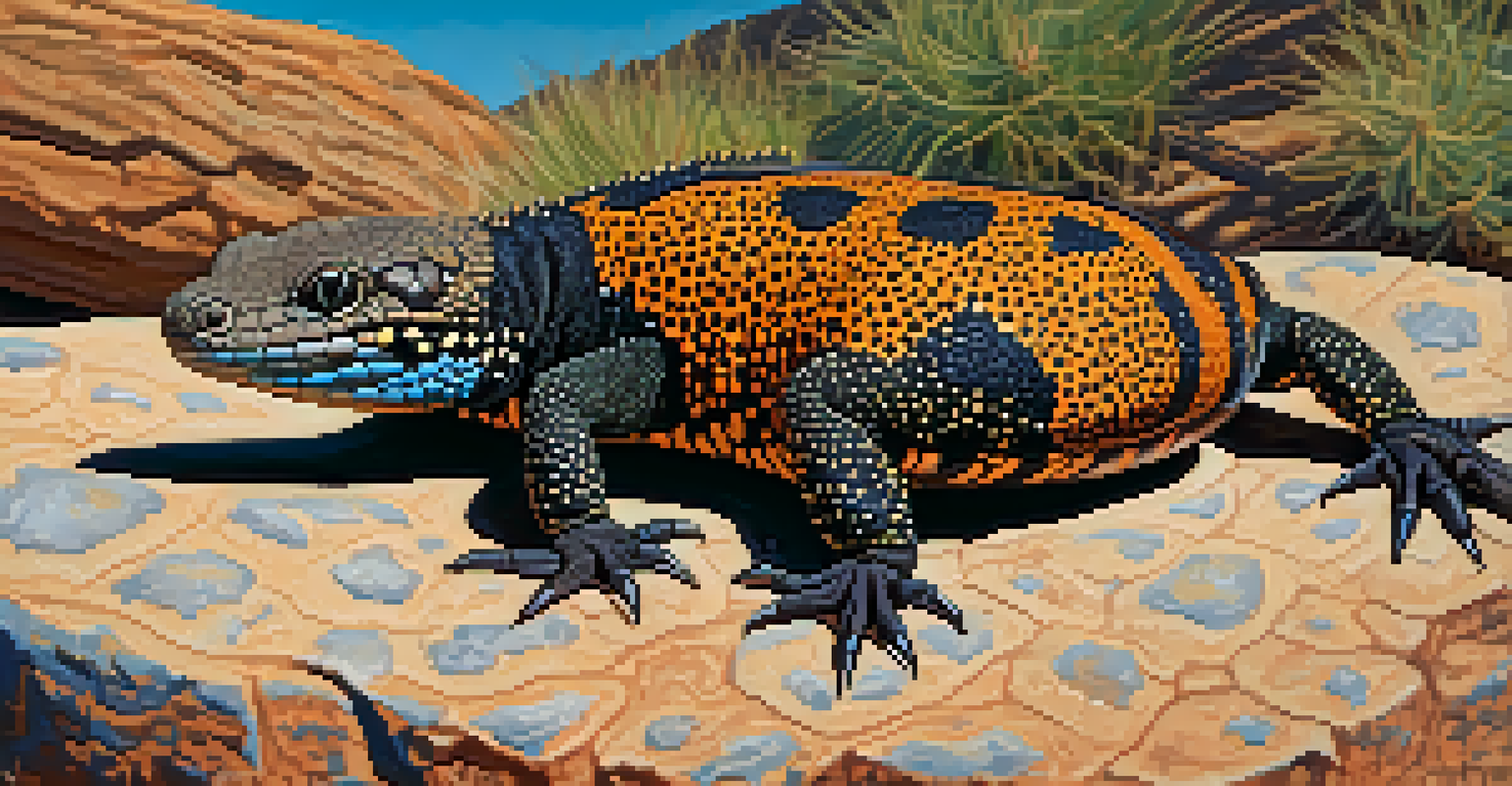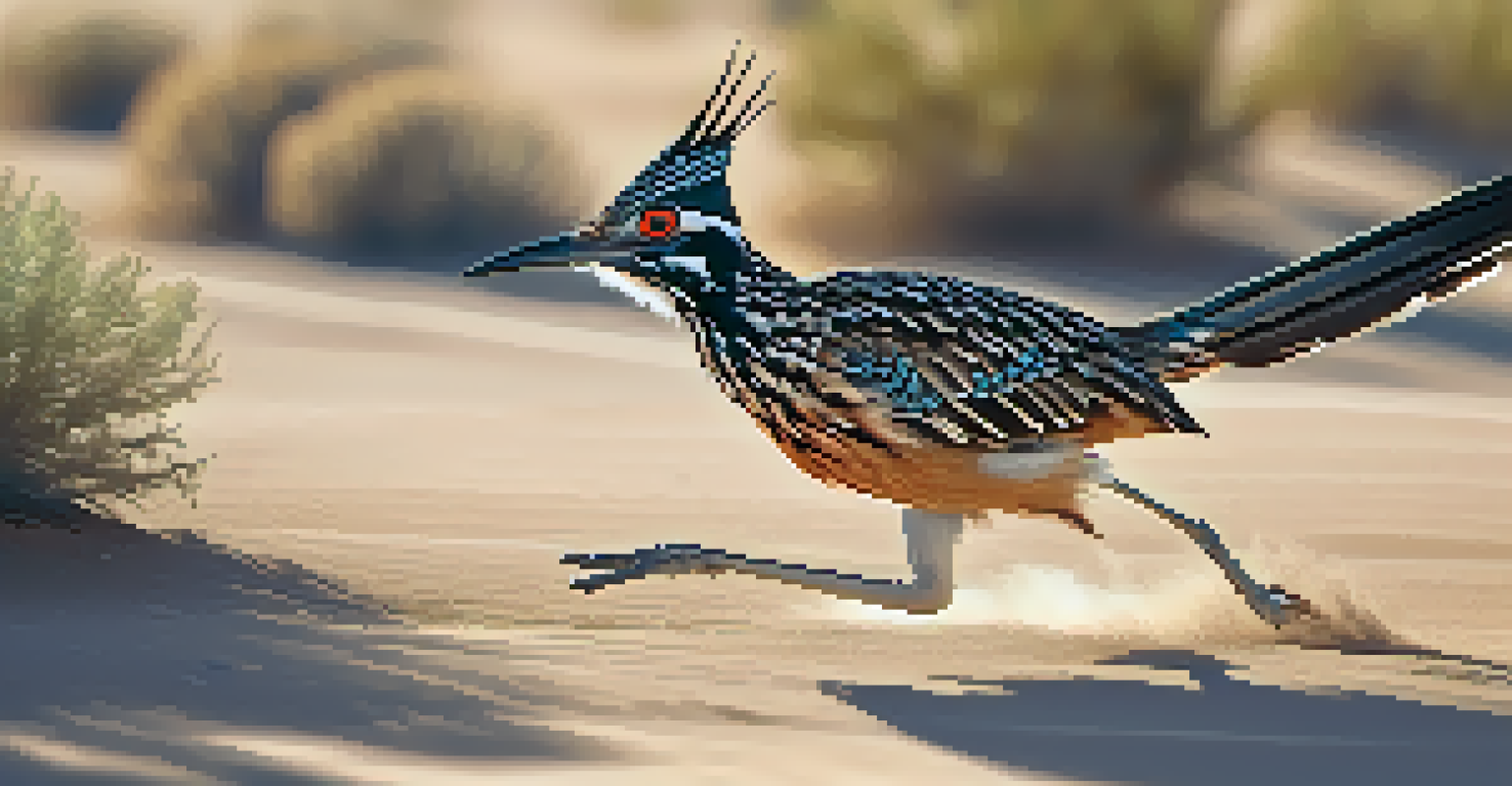The Fauna of the Sonoran Desert: Adaptations and Survival

Introduction to the Sonoran Desert and Its Fauna
The Sonoran Desert, spanning parts of Arizona, California, and Mexico, is a unique ecosystem teeming with life. Despite its harsh conditions, this desert supports a diverse range of animals, each uniquely adapted to survive. From scorpions to coyotes, the fauna of the Sonoran Desert showcases extraordinary resilience and ingenuity.
In every walk with nature one receives far more than he seeks.
The extreme temperatures and limited water sources present significant challenges. Yet, many species have evolved fascinating adaptations to not only survive but thrive in this environment. Understanding these adaptations helps us appreciate the delicate balance of life in the desert.
In this article, we’ll explore various animals of the Sonoran Desert and their remarkable survival strategies. We'll delve into how these creatures have adapted to their environment, showcasing nature’s ingenuity.
Desert Reptiles: Masters of Heat Management
Reptiles like the Gila monster and desert tortoise are prime examples of desert dwellers. These creatures have evolved unique methods to cope with extreme heat and scarce water. For instance, the Gila monster can store fat in its tail, allowing it to survive long periods without food and water.

Many reptiles are also ectothermic, meaning they rely on external temperatures to regulate their body heat. This characteristic allows them to remain inactive during the hottest parts of the day, conserving energy and moisture. They become active during cooler nights, taking advantage of the desert's temperature shift.
Diverse Adaptations in Desert Fauna
Animals in the Sonoran Desert, from reptiles to mammals, showcase unique adaptations that allow them to survive in extreme heat and scarce water.
Additionally, their scaley skin helps reduce water loss, making them well-suited for the arid environment. These adaptations illustrate how reptiles have become experts in surviving the unforgiving desert landscape.
Mammals: Adaptations for Survival in Harsh Conditions
Mammals in the Sonoran Desert, such as the kangaroo rat and coyote, exhibit fascinating adaptations for survival. For instance, the kangaroo rat has evolved to extract moisture from its food, allowing it to live without direct water sources. This unique ability is crucial in an environment where water is scarce.
The clearest way into the Universe is through a forest wilderness.
Coyotes, on the other hand, are opportunistic feeders. Their diverse diet enables them to adapt to varying food availability, whether it’s small mammals, insects, or even fruits. This flexibility plays a significant role in their survival in the desert, where food sources can fluctuate dramatically.
Moreover, many desert mammals are nocturnal, venturing out at night to avoid the daytime heat. Their adaptations highlight the importance of behavioral changes in thriving under challenging conditions.
Birds of the Sonoran Desert: Winged Survivors
Birds in the Sonoran Desert, like the roadrunner and cactus wren, have unique adaptations that help them thrive. For example, the roadrunner can withstand high temperatures, often seen darting across the desert floor in search of food. Their ability to regulate body temperature and find food sources is essential for survival.
Cactus wrens, known for their distinctive nests made from twigs and cacti, have also adapted well to the desert environment. Their nests provide protection from predators and harsh weather conditions, showcasing the ingenuity of avian life in this ecosystem.
Importance of Conservation Efforts
Conservation initiatives are essential to protect the delicate balance of life in the Sonoran Desert as climate change and human activities threaten its ecosystems.
Additionally, many birds in the desert have developed specialized feeding behaviors and calls that help them locate mates and establish territories. These adaptations are crucial for their survival and reproduction in a challenging habitat.
Invertebrates: Small but Mighty Survivors
Invertebrates, such as scorpions and tarantulas, play a vital role in the Sonoran Desert food web. These creatures have adapted to survive extreme temperatures and arid conditions with remarkable strategies. For instance, scorpions are nocturnal and can go long periods without food, allowing them to thrive in the desert's harsh environment.
Many invertebrates have developed tough exoskeletons that help reduce water loss, a key survival trait in the desert. Additionally, some species can enter a state of dormancy during extreme conditions, conserving energy until favorable conditions return.
The diversity and adaptability of invertebrates highlight their importance in maintaining the ecosystem's balance. Despite their small size, they contribute significantly to the overall health of the Sonoran Desert.
Amphibians: Unique Survivors of the Desert
While amphibians are typically associated with wetter environments, some species have adapted to the Sonoran Desert’s dry climate. The Sonoran Desert toad, for example, uses a fascinating method to survive drought conditions. It burrows into the ground, entering a state of dormancy until rain returns, showcasing an incredible survival strategy.
These amphibians are also known for their ability to absorb moisture through their skin, which is essential for their survival in an arid landscape. Their unique adaptations allow them to thrive in a habitat that may seem inhospitable to their kind.
Unique Strategies of Amphibians
Amphibians like the Sonoran Desert toad demonstrate remarkable survival strategies, including dormancy during droughts, highlighting the resilience of life in arid environments.
Understanding the adaptations of amphibians in the desert helps us recognize the remarkable diversity of life that exists in these challenging environments. Their presence is a testament to nature's resilience and adaptability.
Conservation: Protecting the Fauna of the Sonoran Desert
The remarkable adaptations of the Sonoran Desert's fauna remind us of the importance of conservation efforts. As climate change and human activity threaten these unique ecosystems, protecting wildlife habitats becomes crucial. Conservation initiatives aim to preserve the delicate balance of life in the Sonoran Desert.
Education and awareness about the challenges faced by desert species can inspire action and support for conservation efforts. By understanding the incredible adaptations that allow these animals to survive, we can appreciate the need to protect their habitats.

Every small action contributes to the larger goal of preserving the biodiversity of the Sonoran Desert. It's our responsibility to ensure that future generations can witness the remarkable wildlife that thrives in this extraordinary ecosystem.